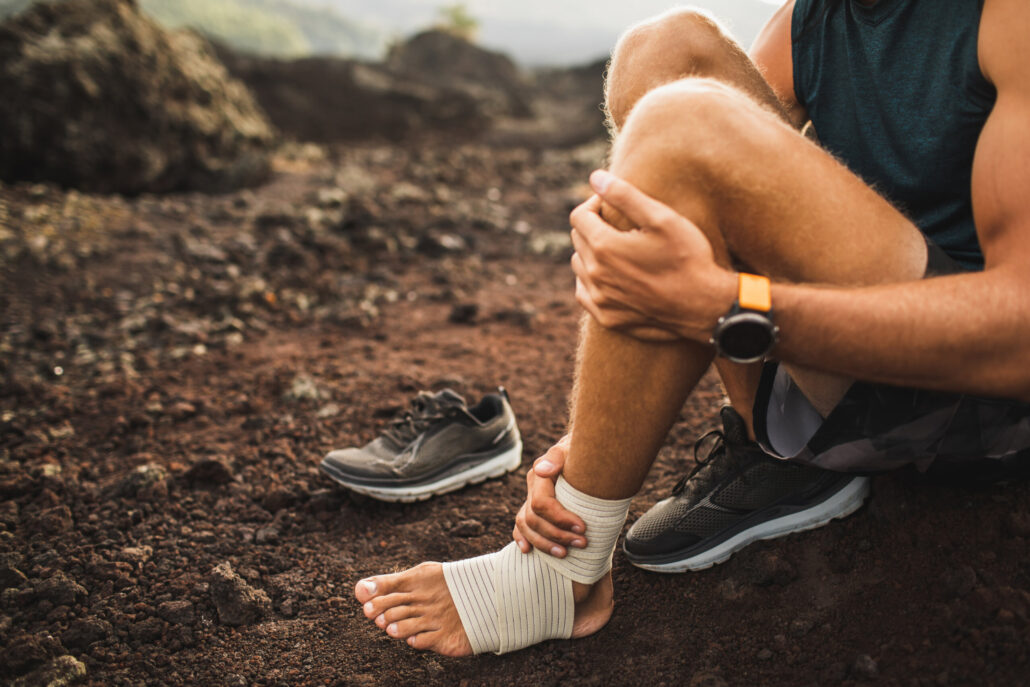What should you do for a soft tissue injury, such as an injury to one or more of your muscles, tendons, or ligaments? You might remember the “RICE” acronym, which stands for rest, ice, compression, and elevation. But did you know that RICE is only good advice for the first one to three days after the injury? Instead, you’re better off using two more acronyms: PEACE and LOVE.
“While RICE can be beneficial in the immediate short term, it completely ignores the other aspects of injury recovery — load management and psychological well-being,” said Summit Orthopedics physical therapist Justin Kertis, PT, DPT.
PEACE for immediate treatment
For the first few days after a soft tissue injury, remember PEACE: protect, elevate, avoid anti-inflammatories, compress, and educate.
Protect – Avoid provocative positions or movements for one to three days, but avoid prolonged rest, which can reduce strength and mobility. Instead, use your pain and discomfort as a guide, and gently get back to activity bit by bit.
Elevate – Put the limb higher than the heart to reduce swelling as often as you can.
Avoid anti-inflammatories – Anti-inflammatory medicines (like ibuprofen and naproxen) can slow down healing of soft tissue injuries. In addition, ice can slow down tissue regeneration. It’s best to let the body’s natural inflammation — which itself is part of the healing process — take its course. However, there are instances where anti-inflammatories or ice are okay, such as if there is a flare-up of pain or increased swelling at the end of the day.
Compress – Use bandages or tape to wrap the affected area and pair with elevation, but make sure your joint can still move through its complete range of motion. This is most applicable with an injured knee or foot/ankle.
Educate – You know your body best, and your body knows what’s good for it. Let nature run its course and avoid unnecessary passive treatments.
LOVE for ongoing management
After the acute phase of an injury has passed (i.e., after the first 48 to 72 hours), it’s time to move from PEACE to LOVE: load, optimism, vascularization, and exercise. This ongoing phase can take six weeks to several months.
Load – As soon as you can, slowly and gently begin to return to activity. Let pain be your guide; you will know when you’re ready to increase load. Perform gentle and tolerable motions little and often. If a particular motion is too painful, reduce the range or depth until you can tolerate it and build up from there.
Optimism – Soft tissue injuries can take a long time to fully heal. A good mental attitude, and some patience, can go a long way. Most soft tissue injuries can heal on their own, but what’s important is taking matters into your own hands and not letting the injury control you.
Vascularization – Increase blood flow to injured soft tissue with aerobic exercise. Anything that you can do that is pain-free and that you enjoy doing would be best.
Exercise – Exercise reduces the chance of reinjuring the soft tissue by strengthening it and promoting healing. Adopting an active approach to your pain will make you stronger, more confident, and better able to manage your injury if it happens again.
“Getting injured is part of being human, and it’s unrealistic to think that it’s completely unavoidable,” Kertis said. “The best thing that you can do with most injuries is rest, listen to your body, and gradually increase your tolerance to get back to the things you love.”
